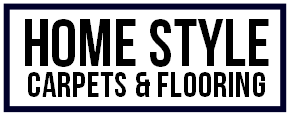Everything you need to know about laying carpet on concrete
/People do not tend to think of concrete floors and carpeting as a natural mix. The latter is more often associated with floors made of a material such as wood.
That said, there is nothing intrinsically wrong with putting carpets on top of floors made of concrete. Indeed, the warmth and softness that carpeting offers can be a good way of mitigating the cold, hard feel of concrete.
Carpets will also conceal the drab, grey look concrete has and give the floors of an office or other commercial space a more attractive and colourful appearance.
There are points to be conscious of if you want to lay carpet over concrete though, which we will detail here.
Make sure the floor has been prepared
The first step in the process will be to take a close look at the floor in the room where you want to lay carpeting. What you are looking for is cracks, holes and other imperfections in the concrete.
If you find any of these, then they should be filled in using something suitable such as Polyfilla or another product designed for the purpose. This is because cracks and other damage to the surface will affect the lay of the carpet once it has been installed.
After filling in the cracks, check that the floor is even with a spirit level. If not, you can use levelling compound to make it even.
Choose the right type of carpet
Generally speaking, carpets are divided into two different types: ones made out of natural fibres and those made from synthetic fibres. When it comes to putting carpeting on top of a concrete floor, a synthetic-fibre carpet will be the superior option.
This is because synthetic carpets absorb less moisture than those made with natural fibres. Although some rooms produce more moisture than others, it is likely to be an issue in any room whenever the weather is humid.
Excessive moisture will lead to the carpet rotting, which will leave you having to pay for a replacement. Synthetic carpets are also to cope with tough cleaning, making them a more durable pick in every way.
The carpet backing must also be made of a synthetic fibre to avoid moisture build-up between the carpet and the concrete underneath.
What underlay to choose
When choosing your carpet, you will not only have to consider the surface material and the backing, but also the underlay. Concrete presents greater challenges here than other types of floors.
Most people do not give a great deal of thought to the underlay of their carpet because they will never see it once it has been laid. That can be a big error when the carpet is being put over the top of a concrete floor though.
Foam is a very popular underlay material due to its versatility and cost-effectiveness. However, it is not really the ideal choice for concrete.
It is an extremely porous material, which means that it will soak up any moisture in the atmosphere. That will cause it to rot pretty rapidly and can also lead to the main carpet and the concrete becoming damaged and unsightly.
The underlay for a carpet going over concrete should be resistant to bacteria, with rubber being one such example.
Getting expert advice from a firm with more than half a century of flooring experience will ensure you get an underlay that is durable enough to handle rubbing against concrete. Need help choosing the right underlay? Talk to our team of experts about your requirements.
Installing the tack strips
These are thin strips that have sharp, pointed metal tips at the top of them. Those sharp edges keep the carpeting firmly in place on the floor.
You can get both concrete and wood tack strips, but if the floor is made of concrete, you will want the tack strips made out of that too. The wooden ones will not have enough strength.
Lay them around the edges of your room with a roughly 5mm gap between them and the wall. That gap will make for a better finish.
The underlay will be set down ahead of the main carpet. Another point to note when it comes to a concrete floor is that standard tack strips may not be enough to hold it steady.
All carpets move very slightly when you walk on them, but the harshness of concrete will see that movement rub away the backing of the carpet. For that reason, it can be worth considering gluing your carpet onto the floor to prevent that sort of movement.
There is nothing to prevent you laying a carpet on top of a floor made of concrete, but as you can see, it is a bit more challenging than other types of floor surface.
It is advised to hire a professional flooring firm instead of attempting it yourself, as this will make the process a lot easier. Here at Home Style Carpets & Flooring we’re happy to help!

